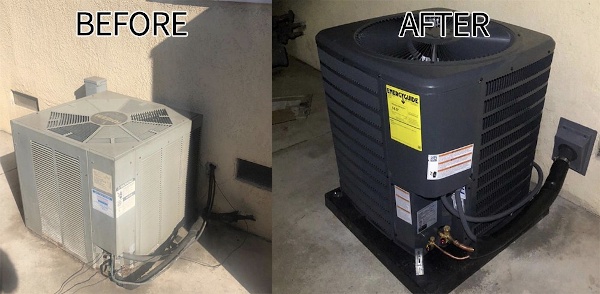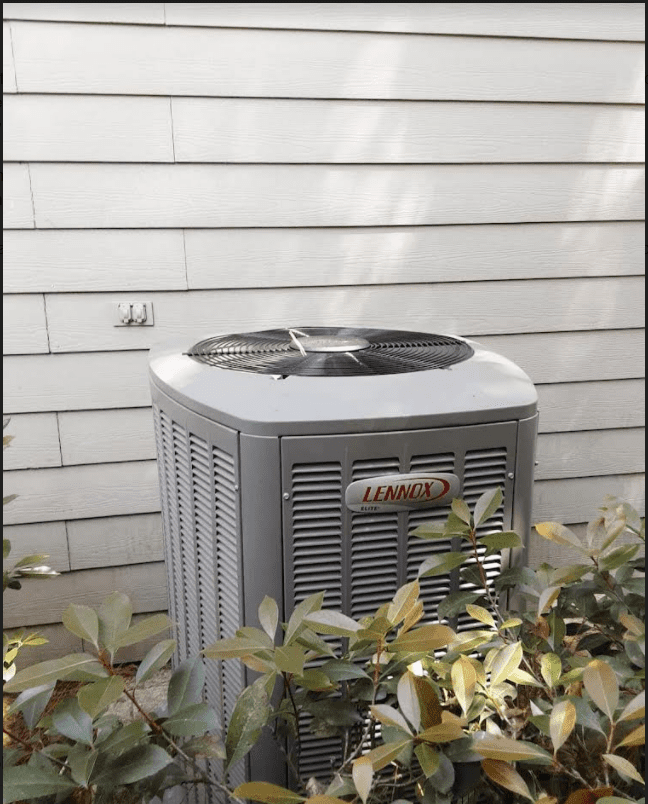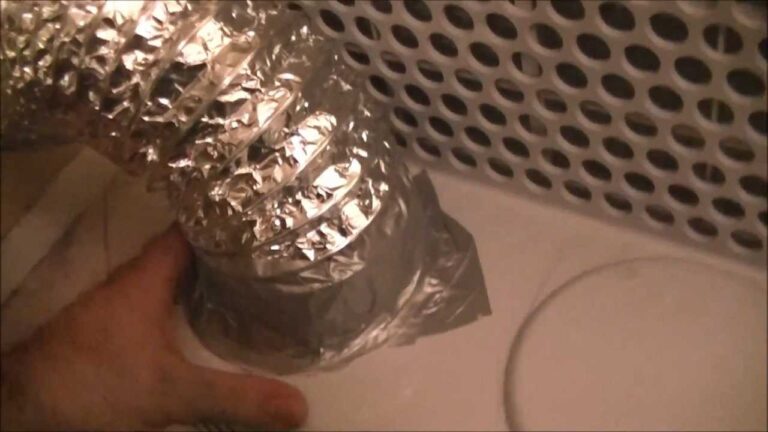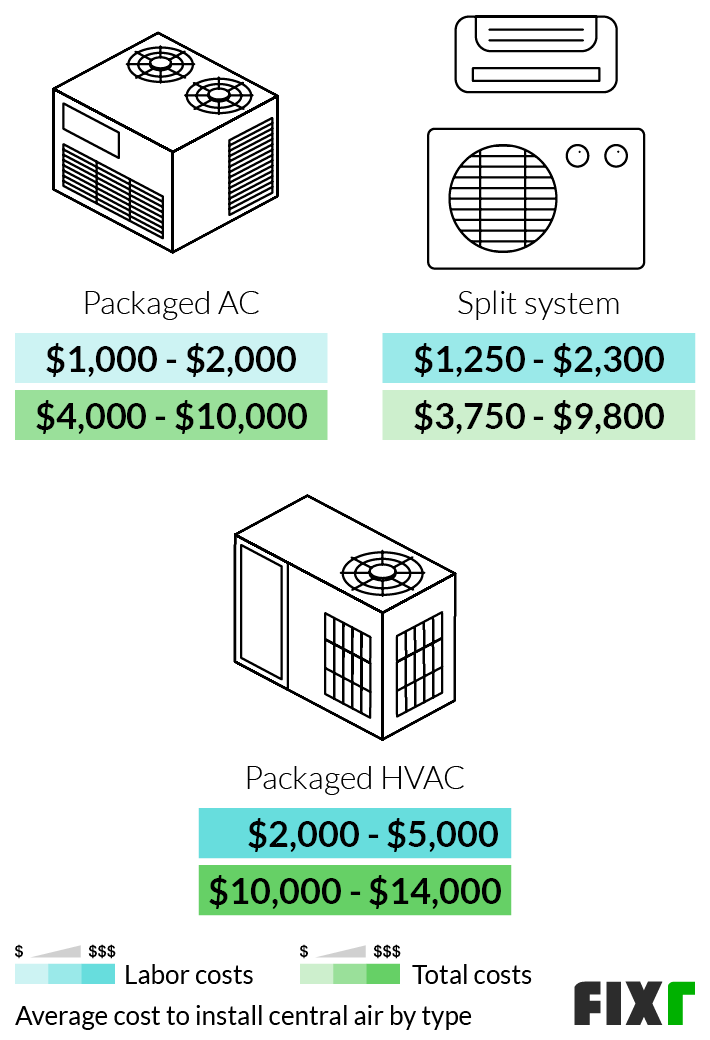Can You Put Freon In A Window Air Conditioner: Expert Guide
Yes, you can put Freon in a window air conditioner, but it’s best left to professionals. Mishandling Freon can be hazardous.
Window air conditioners rely on Freon to cool the air. Over time, they may require a Freon recharge. Attempting to add Freon yourself can be risky and might void the warranty. Proper tools and knowledge are necessary to handle refrigerants safely.
Certified technicians have the expertise to recharge the system correctly, ensuring optimal performance and safety. Regular maintenance of your window air conditioner can help prevent Freon leaks and other issues. Always consult a professional for any refrigerant-related tasks to maintain the efficiency and longevity of your unit.

Credit: diy.stackexchange.com
Introduction To Freon
Freon is a common name for a group of chemicals. These chemicals are used in air conditioning systems. They help cool the air in your home. Understanding Freon is important before adding it to your window air conditioner.
What Is Freon?
Freon is a brand name owned by the Chemours Company. It refers to a class of chemicals known as chlorofluorocarbons (CFCs) and hydrochlorofluorocarbons (HCFCs). These chemicals are colorless, odorless, and non-flammable.
Freon was first introduced in the 1930s. It became popular quickly because it is safe and effective. Freon is used in many household appliances.
Uses In Air Conditioning
Freon is widely used in air conditioning systems. It absorbs heat from inside your home. Then it releases the heat outside. This process cools the air in your house.
Freon is essential for the cooling cycle in your window air conditioner. Without Freon, your air conditioner cannot function properly.
| Type of Freon | Usage | Environmental Impact |
|---|---|---|
| R-22 | Older AC systems | High Ozone Depletion |
| R-410A | Newer AC systems | Lower Ozone Depletion |

Credit: diy.stackexchange.com
Safety Precautions
Before adding Freon to a window air conditioner, follow safety precautions. Freon can be dangerous if not handled properly. This section covers important safety measures.
Handling Freon Safely
Freon is a refrigerant used in many air conditioners. It’s important to handle Freon with care to avoid health risks. Here are some safety tips:
- Ensure the room is well-ventilated.
- Keep Freon away from open flames and heat sources.
- Use appropriate tools designed for handling Freon.
- Follow the manufacturer’s instructions carefully.
Protective Gear
Wearing protective gear is crucial when dealing with Freon. This protects you from harmful exposure. Here’s a list of essential protective gear:
| Protective Gear | Purpose |
|---|---|
| Gloves | Protects hands from direct contact with Freon. |
| Safety Goggles | Shields eyes from splashes and fumes. |
| Face Mask | Prevents inhalation of harmful gases. |
| Long-Sleeve Shirt | Protects arms from exposure. |
Always wear these protective items. Your safety should always come first.
Tools Needed
When adding Freon to a window air conditioner, having the right tools is crucial. It ensures the job is done safely and effectively. Below, we break down the essential and optional tools you’ll need.
Essential Equipment
Here is a list of the necessary tools:
- Manifold Gauge Set: This measures the pressure of the Freon.
- Refrigerant: The Freon itself is necessary to refill.
- Vacuum Pump: This removes air and moisture from the system.
- Wrench Set: Wrenches are needed to open and close valves.
- Screwdrivers: For opening the air conditioner unit.
- Safety Gear: Gloves and safety glasses protect you.
Optional Tools
These tools are not mandatory but can make the process easier:
- Leak Detector: This helps find any leaks in the system.
- Thermometer: For checking the temperature of the air coming out.
- Flashlight: Useful for seeing inside dark areas of the unit.
- Extension Cord: Provides extra reach for your tools.
Using the right tools ensures the job is done safely and efficiently. Always use essential equipment and consider optional tools for added convenience.
Preparation Steps
Before adding Freon to your window air conditioner, you need to take some preparation steps. These steps ensure your safety and the proper functioning of the unit.
Turning Off The Unit
First, turn off the air conditioner. Unplug it from the power source. This step is crucial for your safety. It also prevents any damage to the unit.
Make sure the unit is completely powered down. Check that the fan is not running. This ensures the system is safe to work on.
Locating The Low-pressure Port
Next, locate the low-pressure port. This is where you will add the Freon. The port is usually on the side or back of the unit.
Look for a metal valve with a cap. The cap may have the label “L” or “Low”. Remove the cap to access the port.
You can use a flashlight to help find the port. Ensure the area around the port is clean. This prevents any dirt from entering the system.
Adding Freon
Adding Freon to a window air conditioner can improve its cooling. This task requires careful steps to ensure safety and efficiency. Follow the steps below to add Freon to your unit.
Connecting The Hose
First, gather the necessary tools for the job. You will need:
- Freon canister
- Gauge set
- Hose
- Screwdriver
Ensure the air conditioner is turned off. Locate the service port on your unit. Attach the hose to the service port. Make sure the connection is secure. This prevents leaks and ensures proper Freon flow.
Releasing The Freon
With the hose connected, you can now release the Freon. Follow these steps:
- Open the Freon canister valve slowly.
- Watch the gauge to monitor pressure levels.
- Release Freon until the desired pressure is reached.
Do not overfill the system. Overfilling can damage the air conditioner. Close the valve on the Freon canister. Disconnect the hose carefully. Turn the air conditioner back on and check for cool air.
Adding Freon can enhance your air conditioner’s performance. Always use proper safety measures. If unsure, consult a professional technician.
Checking For Leaks
Before adding Freon to a window air conditioner, check for leaks. Leaks can cause your air conditioner to lose efficiency. They also waste the Freon you add.
Visual Inspection
A visual inspection is the first step in checking for leaks. Look for oil stains or dirt build-up around joints and connections. These signs may indicate a leak.
- Oil Stains: Oil stains can indicate a Freon leak.
- Dirt Build-Up: Dirt build-up around joints may show a leak.
- Listen for Hissing: A hissing sound can also signal a leak.
Use a flashlight to see hidden areas. Check around the compressor, condenser coils, and evaporator coils.
Using A Leak Detector
If you can’t find leaks visually, use a leak detector. These devices are more accurate. They can detect even small leaks.
| Step | Description |
|---|---|
| 1 | Turn on the leak detector. |
| 2 | Move the detector around the air conditioner. |
| 3 | Listen for a beep or see a light signal. |
Follow the instructions that come with your leak detector. This ensures you use it correctly. Always check around all joints and connections.
Testing The Unit
After adding freon to your window air conditioner, testing the unit is crucial. This ensures the system functions properly and efficiently. Follow these steps to verify the air conditioner’s performance.
Restarting The Air Conditioner
First, reconnect the air conditioner to the power source. Turn it on and set it to the desired cooling temperature. Allow the unit to run for at least 15 minutes. This helps stabilize the system and lets the freon circulate properly.
Monitoring Performance
Next, check the air conditioner’s performance by feeling the air it blows. The air should be cool and consistent. If the air is warm or weak, there may be an issue. Use a thermometer to measure the temperature difference.
| Condition | Action |
|---|---|
| Cool Air | Unit is functioning well |
| Warm Air | Check freon level again |
| Weak Airflow | Check for blockages |
Also, listen for unusual noises. Strange sounds may indicate a problem. Ensure the unit is running smoothly and quietly.

Credit: www.youtube.com
Environmental Considerations
Putting Freon in a window air conditioner has environmental impacts. Freon is a refrigerant that can harm the environment. It affects the ozone layer and contributes to global warming. Here, we discuss proper disposal of Freon and eco-friendly alternatives.
Proper Disposal Of Freon
Disposing of Freon requires care. Improper disposal can release harmful chemicals. Follow these steps for proper disposal:
- Hire a licensed technician for Freon removal.
- Ensure the technician follows EPA guidelines.
- Freon should be taken to a certified recycling facility.
Local waste management services can also guide you. They often have special drop-off points for hazardous materials. Never release Freon into the air.
Eco-friendly Alternatives
Consider using eco-friendly refrigerants. They are less harmful to the environment. Some popular options include:
- R-410A: It does not deplete the ozone layer.
- R-32: It has a lower global warming potential.
- Propane (R-290): It is a natural refrigerant with low environmental impact.
Switching to these alternatives can help protect the environment. They are also more energy-efficient. Check if your air conditioner is compatible with these refrigerants.
Here is a comparison table of these eco-friendly refrigerants:
| Refrigerant | Ozone Depletion Potential (ODP) | Global Warming Potential (GWP) |
|---|---|---|
| R-410A | 0 | 2088 |
| R-32 | 0 | 675 |
| Propane (R-290) | 0 | 3 |
Using these alternatives is a simple step to reduce environmental impact. They offer a sustainable solution for cooling needs.
Frequently Asked Questions
How Much Does It Cost To Put Freon In A Window Air Conditioner?
Refilling Freon in a window air conditioner costs between $100 and $150, depending on the service provider.
How Do You Know If Your Window Air Conditioner Needs Freon?
You might need Freon if your window AC blows warm air, forms ice on coils, or has increased energy bills.
What Kind Of Freon Does A Window Air Conditioner Use?
Window air conditioners typically use R-410A or R-32 refrigerant. Older models might use R-22, which is being phased out.
Conclusion
Topping off Freon in a window air conditioner is possible but not recommended. It’s best to consult a professional. Regular maintenance ensures efficiency and longevity. Proper care saves money and keeps your home cool. Always prioritize safety and follow manufacturer guidelines for optimal performance.
Stay cool and enjoy your comfortable space!





